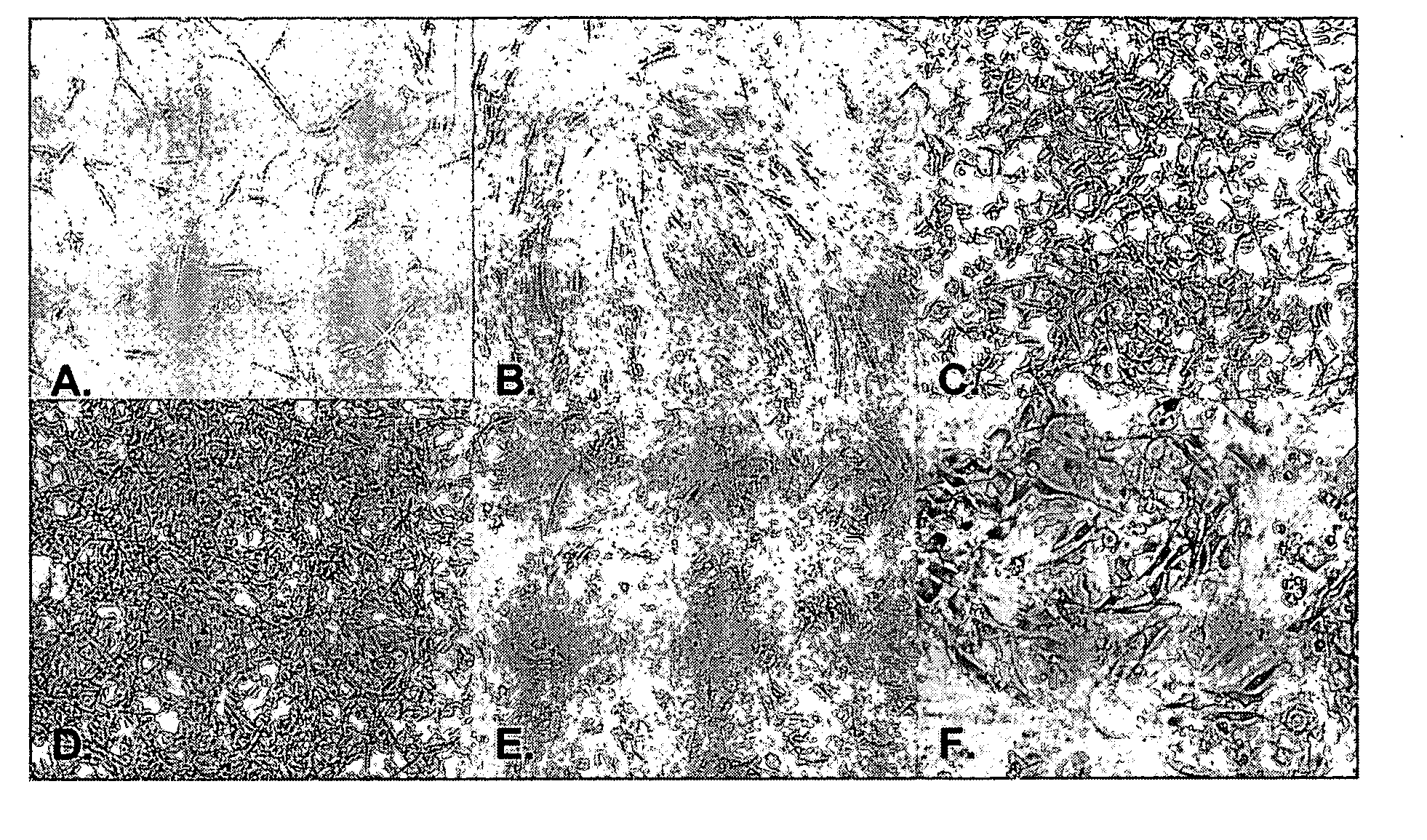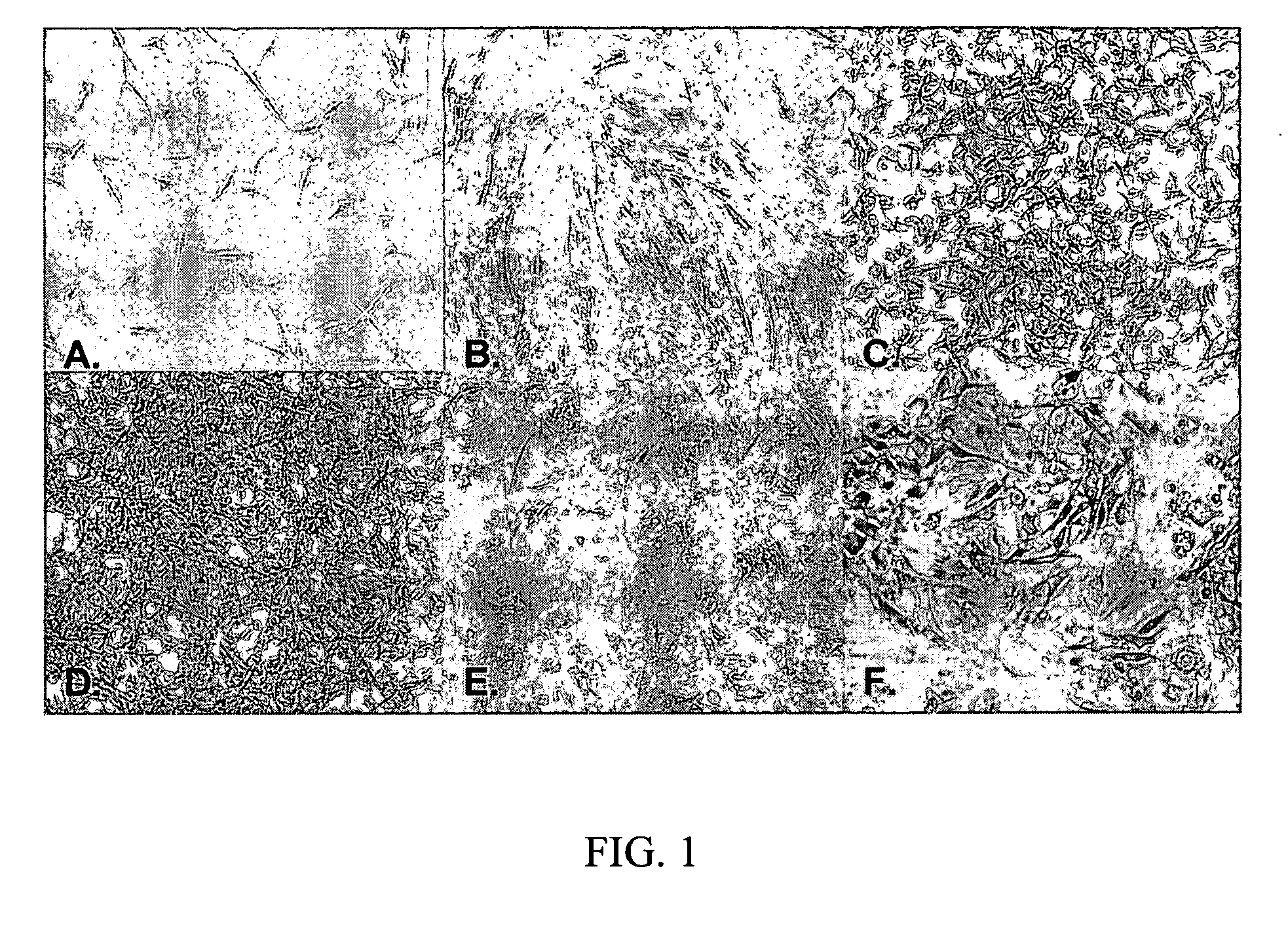Adipose derived stromal cells exhibiting characteristics of endothelial cells
a technology of endothelial cells and stromal cells, which is applied in the field of adipose derived stromal cells exhibiting characteristics of endothelial cells, can solve the problems of high risk and discomfort for the donor, the failure of current methods for culturing and obtaining a large number of endothelial progenitor cells, and the death of lethally irradiated mi
- Summary
- Abstract
- Description
- Claims
- Application Information
AI Technical Summary
Benefits of technology
Problems solved by technology
Method used
Image
Examples
example 1
Establishment of Primary ADAS Cultures
[0167] The stromal vascular fraction (SVF) from white adipose tissue obtained by lipoaspiration was digested in Krebs-Ringer Bicarbonate buffer containing 0.5% BSA and 125 μg / mL collagenase type I (final concentrations) at 37° C. for 80 minutes with vigorous shaking at 10 minute intervals. Following the digestion, the suspension was centrifuged at 1,200 rpm for five minutes at room temperature, shaken vigorously and then centrifuged again at 1,200 rpm for five minutes at room temperature. The lipid / adipocyte layer was aspirated and discarded without disturbing the SVF pellet. The pellet was resuspended / washed in stromal cell medium (DMEM / F12 1:1, 10% FBS, 1×antibiotic / antimycotic) and resuspended in a total volume of 40 mL stromal cell medium. 10 mL of this suspension was added to T-225 flasks containing 40 mL of stromal medium. Non-adherent cells were washed off one to three days following plating and medium was replaced with stromal cell medi...
example 2
Treatment of ADAS Cells
[0168] In two separate experiments, ADAS (P0) cells from a single donor were plated in T-83 flasks at a density of about 6×103 cells / cm2 (passage 1). Control ADAS cells were cultured in expansion medium comprising DMEM / F12 (1:1), 10% FBS, 5 ng / mL hEGF and 1 ng / mL hFGF with media changes every two to four days. ADAS cells in the treatment group were subjected to a stepwise treatment regimen beginning with six days in MII medium (DMEM / F12, N2 supplement, B27 supplement, 2.3 mM glutamine, 10 ng / mL hFGF) with medium changes on days 1, 3 and 5 following plating. On day 7, the cultures were rinsed twice with D-PBS and then the ADAS cells were incubated for four days in MIII medium (DMEM / F12, N2 supplement (Invitrogen, Carlsbad, Calif.), B27 supplement (Invitrogen, Carlsbad, Calif.), 2.3 mM glutamine, 10 mM nicotinamide, 2% FBS). MIII was replaced on day 10 and both control and treated ADAS cells were harvested via trypsinization on day 11 and subjected to flow cyto...
PUM
 Login to View More
Login to View More Abstract
Description
Claims
Application Information
 Login to View More
Login to View More - R&D
- Intellectual Property
- Life Sciences
- Materials
- Tech Scout
- Unparalleled Data Quality
- Higher Quality Content
- 60% Fewer Hallucinations
Browse by: Latest US Patents, China's latest patents, Technical Efficacy Thesaurus, Application Domain, Technology Topic, Popular Technical Reports.
© 2025 PatSnap. All rights reserved.Legal|Privacy policy|Modern Slavery Act Transparency Statement|Sitemap|About US| Contact US: help@patsnap.com


